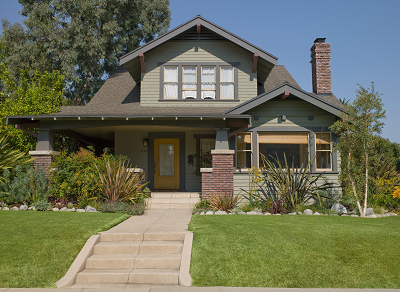
Is Your Home Insured at The Correct Value?
Whether shopping for home insurance as a first-time home buyer or reviewing your existing policy, you likely assume that your policy will insure your home at its current value. However, that’s not always the case. If your home is not insured at the correct value, you may risk being underinsured or paying for more coverage than you need. Read on to learn more about how your home’s value is determined and what to do if you suspect you’re not insured at the correct value.
How Is Home Value Determined?
When buying insurance for your home, there are typically two options available for valuing your property: actual cash value or replacement cost. Actual cash value considers depreciation, which is the decrease in value due to normal wear and tear. Replacement cost covers the amount needed to repair or replace your damaged property with materials of similar kind and quality, without deducting for depreciation.
In order to receive full coverage, most insurance companies require homeowners to purchase replacement cost coverage worth at least 80% of their home’s replacement cost. For instance, if you bought your home for $275,000, your insurance coverage should be at least $220,000.
Unfortunately, many homeowners overlook the importance of adjusting their coverage to keep up with changes in inflation and home improvements, which can impact their home’s replacement cost. This can lead to unpleasant surprises when an insurance company does not fully cover the cost of replacing their home after a disaster or loss.
If you have less than 80% of your home’s replacement cost insured, your insurance company may only pay the difference between 80% of the replacement cost and the amount of coverage you purchased. Therefore, it’s crucial to stay informed and adjust your coverage accordingly to ensure you’re fully protected in the event of a loss.
Why Would My Home’s Value Change?
Understanding the factors that can affect the replacement cost value of your home is crucial, as any changes can directly impact the 80% rule. Although every policy differs, the following are some common factors that influence the replacement cost value of your home:
- Square footage of your home
- Home renovations and improvements such as changing flooring, appliances, and fixtures; updating the roof; or installing new windows
- Cost of replacing materials
- Labor costs for any necessary repairs
- Value of interior and exterior components
It’s worth noting that the market value of your home does not necessarily affect its replacement cost. As such, factors like curb appeal, the condition of your home and the value of comparable homes in your area may not impact the replacement cost value.
Are You Properly Insured?
Reach out to the team at Home Loan Insurance today to discuss whether your home is properly insured. Contact us today.
This blog is intended for informational and educational use only. It is not exhaustive and should not be construed as legal advice. Please contact your insurance professional for further information.
Categories: Home Insurance
